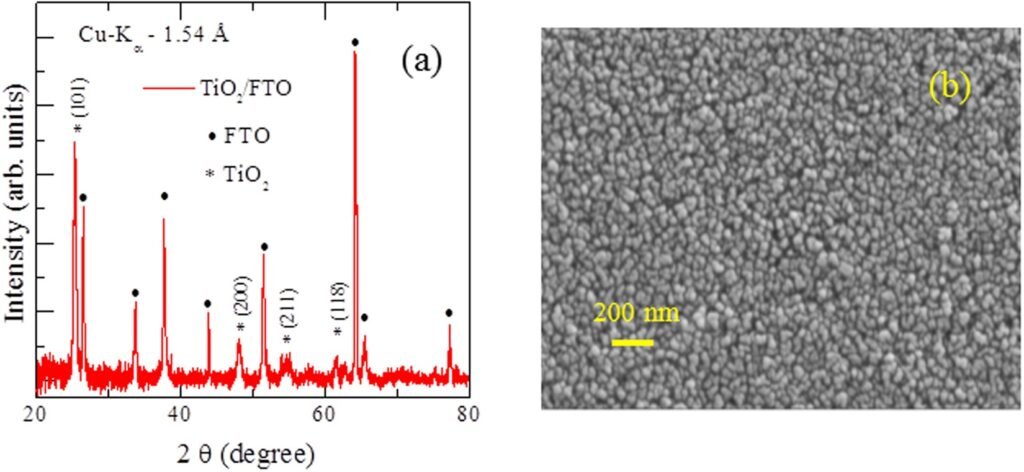Sb2Te3 as a Research Material for ReRAM Devices: An In-Depth Overview

Sb2Te3 as a Research Material for ReRAM Devices: An In-Depth Overview Introduction The rapid evolution of technology in recent decades has driven the need for faster, more efficient, and reliable memory devices. Among the various types of non-volatile memory, Resistive Random-Access Memory (ReRAM) has gained significant attention due to its promising performance in terms of […]
Doping of HfO2 material

Doping of HfO2 Introduction Doping HfO₂ (hafnium dioxide) with elements like niobium (Nb), vanadium (V), europium (Eu), and lanthanum (La) can significantly alter the material’s properties, depending on the specific dopant and concentration. Here’s an overview of what each dopant might contribute to HfO₂: 1. Niobium (Nb) Doping: Electrical and Optical Properties: Niobium doping can […]
Comprehensive Guide to Manganese Dioxide (MnO₂) as a Research Material

Comprehensive Guide to Manganese Dioxide (MnO₂) as a Research Material Introduction to Manganese Dioxide (MnO₂) Manganese Dioxide (MnO₂) is a widely studied inorganic compound known for its unique chemical, physical, and electronic properties. It plays a crucial role in various industrial applications, including catalysis, energy storage, water treatment, and electronics. MnO₂ exists in multiple polymorphic […]
Future Opportunities and Scope of ReRAM Devices

Future Opportunities and Scope of ReRAM Devices Introduction Resistive Random-Access Memory (ReRAM) is emerging as a transformative technology in the realm of non-volatile memory (NVM). With its high-speed operation, low power consumption, and superior scalability, ReRAM is poised to replace conventional memory technologies like Flash and DRAM. As industries push for more energy-efficient, high-performance, and […]
ReRAM: An Emerging Memory Technology Transforming the Future of Data Storage

ReRAM: An Emerging Memory Technology Transforming the Future of Data Storage As we push the boundaries of computing and data processing, the demand for faster, smaller, and more energy-efficient memory continues to rise. Conventional memory technologies like DRAM and Flash, while having served reliably for decades, are beginning to show limitations in terms of scalability, […]
Hexagonal Boron Nitride (h-BN): The Next Frontier for ReRAM Technology

Hexagonal Boron Nitride (h-BN): The Next Frontier for ReRAM Technology In the fast-paced world of next-generation memory devices, Resistive Random-Access Memory (ReRAM) has been gaining serious traction as a promising non-volatile memory solution. Amid the many materials being explored for this technology, Hexagonal Boron Nitride (h-BN) – a 2D material with outstanding physical and electrical properties—is […]
Understanding Grain Boundaries: Importance, Types, and Applications

Grain boundaries are fundamental concepts in materials science and metallurgy that play a crucial role in determining the properties of materials. These boundaries, which form the interfaces between individual crystalline regions or “grains,” significantly influence the behaviour of metals, ceramics, and other crystalline solids. In this blog, we will explore what grain boundaries are, their […]
TiO2 as a Research Material for Resistive Switching Applications

In recent years, the study of resistive switching materials has gained significant attention due to their potential applications in next-generation non-volatile memory devices, neuromorphic computing, and sensors. Titanium dioxide (TiO2) is one of the most promising materials for resistive switching (RS) applications. Its unique properties, such as high dielectric constant, ease of fabrication, and tunable […]
Single Crystalline vs Polycrystalline Materials: A Comprehensive Overview

Materials play a fundamental role in the development of technology, manufacturing, and everyday life. The properties of materials can significantly vary based on their internal structure, which influences their strength, conductivity, optical properties, and even their resistance to wear and corrosion. Two of the most important categories in materials science are single crystalline and polycrystalline […]
Ohmic Contact: A Detailed Understanding

Ohmic contacts are an essential component in semiconductor devices, as they facilitate the efficient flow of electrical current between the semiconductor material and external metal contacts. These contacts are designed to have a linear, low-resistance relationship between current and voltage, ensuring that they do not introduce significant resistance or alter the electrical characteristics of the […]

